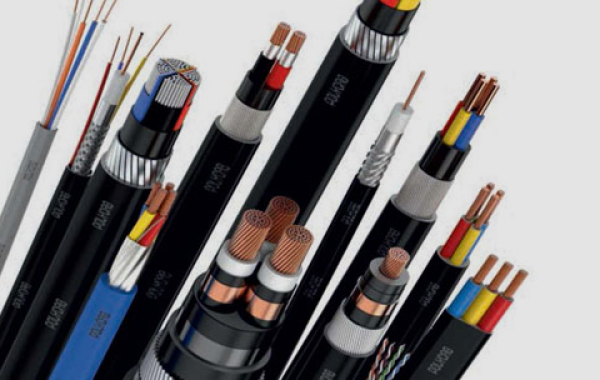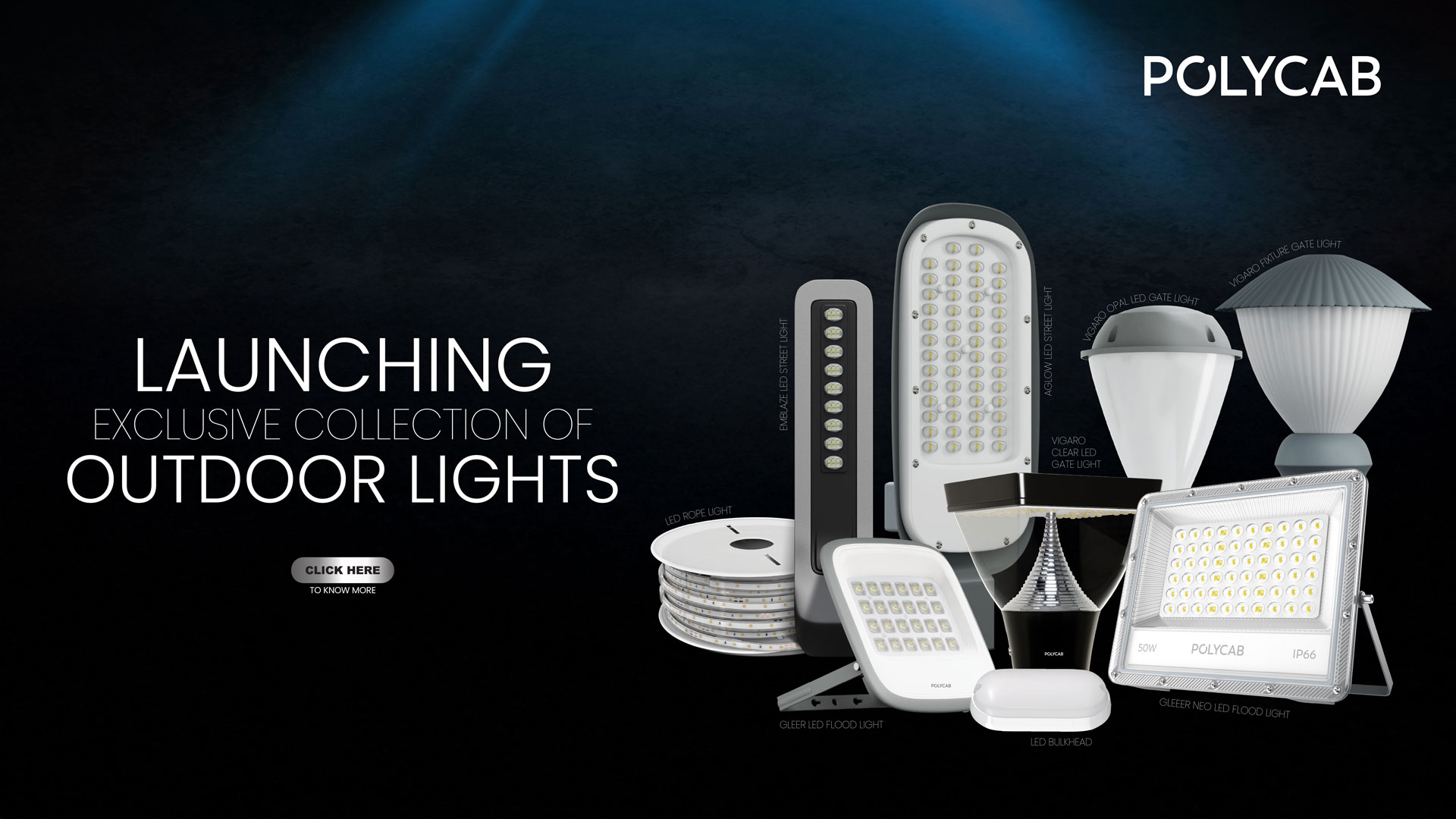Different Types of Wires to Meet All Household Needs

- July 25, 2024
- No comments yet
Different Types of Wires to Meet All Household Needs
Our homes’ electricity is what makes our lives convenient, comfortable, and efficient. There would be no turning on the air conditioner, lights or perhaps even your smart devices if it wasn’t for the electrical system installed in your home. This system is made up of various elements that help transmit electricity or power through different appliances. One of the most important components is the wiring. It is the electrical wires that transport electricity throughout buildings, homes, devices, vehicles, and more. There are different types of wires, with each varying in size, material and transmission capacity. Choosing the right ones based on your home’s specific requirements is crucial for optimum power supply, convenience and safety. If you are contemplating your choice, consider this a Polycab guide to discover the best electrical wires and cables for your home.
Wiring Essentials: Exploring Different Types of Wires and Cables for Your Home
When exploring wires for house, it is crucial to understand the differences between each type. Let’s start by clearing up the basics: wires are a single electrical conductor that transmits electricity, whereas cables are a group of individual wires encased in sheathing.
Aluminium or copper electric wires are usually bare or insulated with coloured thermoplastic, indicating neutral, ground, or hot in your electrical setup. Cables consist of neutral, ground, and hot wires, in addition to other wires with varied functions, all insulated with a colour-coded thermoplastic. These wires are twisted or bonded together and encased in an outer sheath.
Now that the basics are clear, let’s explore the various types of wires and cables you need to meet all your household requirements.
Single-conductor Wires: They connect devices and appliances to power sources across residential settings. Made of copper or aluminium and covered with either a plastic jacket or insulation, these wires come in various gauges, which you must select based on your current requirements. Here are a few types of single-conductor wires you can explore:
-
THHN Wire: The acronym stands for Thermoplastic High Heat-Resistant Nylon-Coated. This type of wire is often trusted for its heat resistance, which makes it suitable for applications in both wet and dry locations.
-
THWN Wire: This acronym stands for Thermoplastic Heat-and Water-Resistant Nylon-Coated. This type of wire is particularly designed to withstand outdoor and wet conditions, making it a reliable choice for moisture-prone areas.
-
TW Wire: Thermoplastic wire (TW) is most popularly chosen for residential or indoor wiring systems.
-
UF Wire: This refers to the Underground Feeder Wire, which is specially designed to resist moisture and sun exposure. It is buried directly into the ground, making it a great choice for outdoor applications.
Multi-Conductor Wires or Cables: As the name implies, these wires bundle multiple conductors within a single jacket to form a cable. They are ideal for applications requiring several wires to connect to one power source, such as intercoms, security systems, and HVAC systems. Here are a few of the most popular multi-conductor cables you can choose from:
-
Coaxial Cable: You can connect your television and internet connections with these cables. They are known for high-frequency signals with minimal interference.
-
Non-Metallic Sheathed Cable: NM cable consists of two or more insulated conductors and a bare copper ground wire, all encased in a plastic sheath. It is commonly used for general wiring needs like lighting circuits, outlets, and appliances.
-
Metal Sheathed Cable: Also known as Armored cable or BX cable, it is a flexible metal-clad wiring option that offers greater protection than NM cable. It has insulated wires within a metal sheath, making it ideal for exposed areas or places needing extra protection, like basements or outdoor setups. The metal sheath can be braided, twisted or have a solid pipe-like structure.
Low-Voltage Wires: These are ideal choices for your doorbells, thermostats, and security systems. They are thinner and have specialised insulation to safely carry lower-voltage signals.
Exploring Polycab Wires: Your Key to Safe and Efficient Electric Supply
Now that you know the basic types of wires and cables for your home, it is time to explore the best. Let’s look at a few of the many Polycab wiring options you can add to your residence’s electrical system.
-
HR FR LSH LF (Heat Resistance Flame Retardant Low Smoke Halogen Lead-Free) Wire: This Polycab unsheathed wire is made from specially formulated polymers that restrict the emission of any type of toxic gas, making it safe for use in damp areas. Featuring the flammability of IEC 60332-1, a nominal voltage of 600/1100 V, a temperature range of -15°C to +85°C, a smooth surface with enhanced lubrication properties and high abrasion resistance, this wire is also eco-friendly, safe and energy-saving.
-
FR LSH (Flame Retardant Low Smoke Low Halogen) Wire: This Polycab single-core unsheathed insulated wire is an ideal choice for residential wiring. It is either embedded in a conduit or on the wall’s surface. Its enhanced flame-resistance properties and low smoke generation also make it ideal for use in high-rise buildings and malls. It stands out for its maximum 20% acid gas generation, flammability of IEC 60332-1, smoke density rating of 60%, nominal voltage of 600/1100 V, and maximum operating temperature of 70 °C.
-
ETIRA Flame Retardant Wire: Crafted from the highest-grade electrolytic copper, this wire features FlameStop insulation technology, which ensures enhanced safety against electrical accidents and fire hazards. Perfect for confined spaces and applications that require high flexibility, these wires are suitable for both indoor and outdoor applications, handling working voltages of up to 1100V.
After thoroughly considering factors like electrical load, wire size, insulation type, and special requirements such as high-temperature resistance and low-voltage applications, you can make the right choice. Understanding these types of wires and cables will certainly simplify your search. For the best wiring solutions, explore and purchase from our collection to ensure optimum safety, performance, and energy savings.
RECENT POSTS
- Switch Up for Diwali: The Benefits of Upgrading to Modular Switches from Polycab
- Diwali Lighting Ideas: 5 Ways to Use LED Strip Lights for a Festive Home Décor
- Upgrade Your Home with Polycab Remote Controlled Fans This Diwali
- 5 Hacks to use your Pedestal Fan for additional cooling
- Launching Polycab Super ROI Fans - Learn More About Super ROI Fans
 Fans
Fans
 Wires
Wires
 Lighting
Lighting
 Switches and Accessories
Switches and Accessories
 Water Heaters
Water Heaters
 Switchgear
Switchgear
 Polycab Home Advisors
Polycab Home Advisors
 Cables by Application
Cables by Application Cables by Standards
Cables by Standards Cables by Type
Cables by Type Renewables
Renewables Corporate
Corporate News and Media
News and Media Life at Polycab
Life at Polycab Contact Us
Contact Us Financial & Corporate Information
Financial & Corporate Information Annual Reports
Annual Reports Shareholder’s Information
Shareholder’s Information Credit Ratings
Credit Ratings Latest Updates
Latest Updates Notices
Notices Corporate Governance
Corporate Governance Corporate Action History
Corporate Action History Investors Contacts
Investors Contacts Disclosures under Regulation 46
Disclosures under Regulation 46


